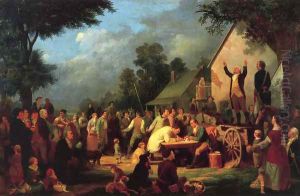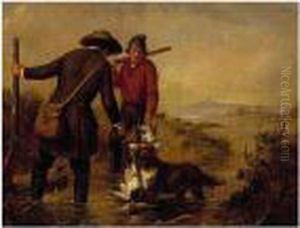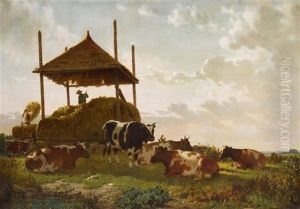William Tylee Ranney Paintings
William Tylee Ranney was an American painter best known for his depictions of early frontier life and the expansion westward, offering a unique and romanticized vision of the American West. Born on May 9, 1813, in Middletown, Connecticut, Ranney showed an early interest in art. However, his path to becoming a painter was not straightforward. At the age of twelve, after the death of his father, he moved to Fayetteville, North Carolina, to live with his uncle. His artistic career began in earnest after he returned to New York in the 1830s, where he pursued his interest in art while working in a variety of jobs, including as a tinplate worker.
Ranney's life took a significant turn in 1836 when he enlisted in the Texas Army to fight in the Texas Revolution, an experience that deeply influenced his later works. After serving in Texas, he returned to the East Coast and dedicated himself to painting. By 1840, he had established himself as a professional artist, setting up a studio in West Hoboken, New Jersey. He married Margaret Agnes O'Neill in 1841, and they had three children.
Ranney's paintings during this period often depicted scenes of American frontier life, including settlers, trappers, and Native Americans. He was known for his detailed and realistic portrayals, which were based on both personal experience and imagination. His works such as 'The Prairie Hunter' (1846) and 'Marion Crossing the Pee Dee' (1850) reflect his fascination with the spirit of American expansion and the concept of manifest destiny.
Unlike many of his contemporaries, Ranney did not travel extensively in the West. Instead, he drew upon second-hand accounts, his experiences in Texas, and his vivid imagination to create his scenes. Despite this, his works were celebrated for their authenticity and attention to detail. He was a member of the National Academy of Design and exhibited his work there as well as at the American Art-Union, which played a crucial role in his success by purchasing and distributing prints of his paintings to their subscribers across the country.
William Tylee Ranney's health began to decline in the early 1850s, and he died on November 18, 1857, in West Hoboken, New Jersey, at the age of 44. Despite his relatively brief career, Ranney left a significant legacy as one of the early painters to capture the spirit and transformation of the American West. His works continue to be celebrated for their historical value and artistic merit, offering insight into America's westward expansion and the early frontier life.
































